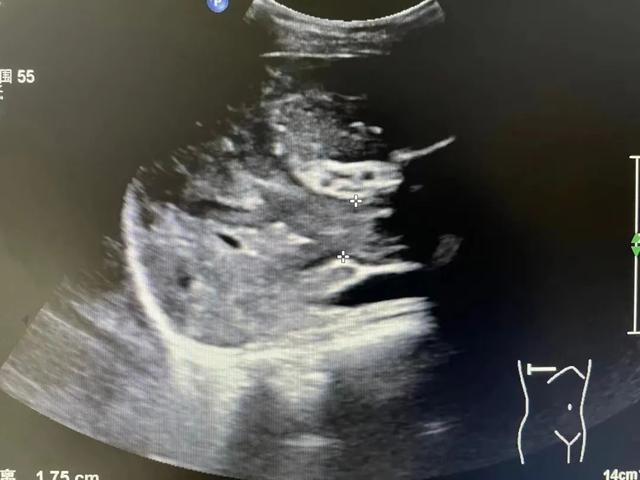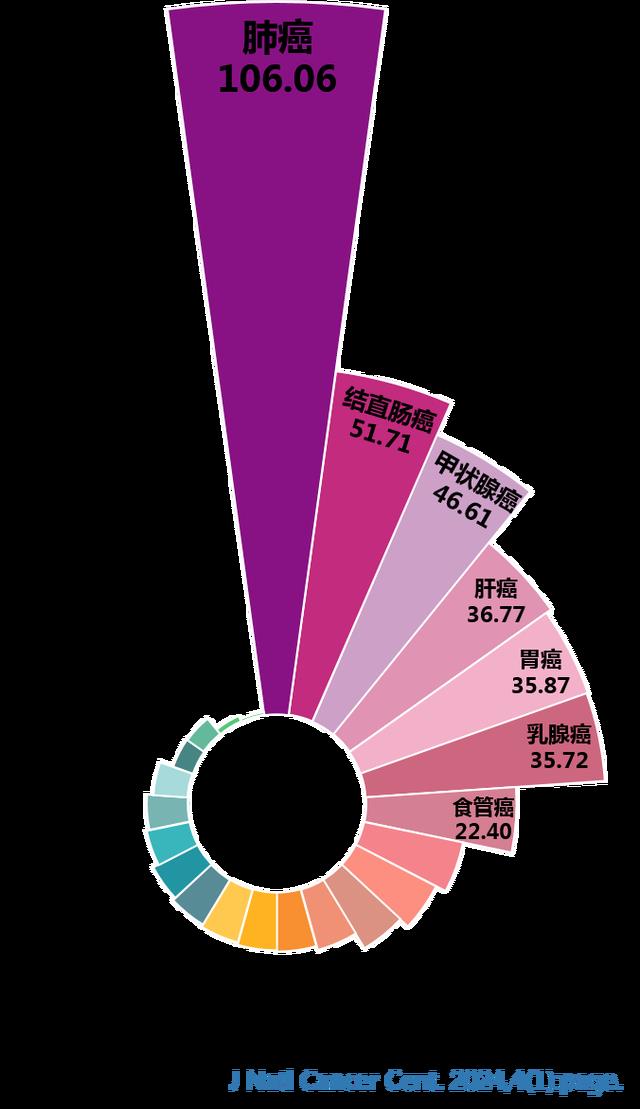24-year-old mother diagnosed! Collapse: the child is only 3 years old!
Xiaoli (a pseudonym), a 24-year-old young mother in Zhejiang, never thought of it.
The trilogy of liver diseases such as "hepatitis B-cirrhosis-liver cancer" will happen to you.

Xiaoli’s sonogram
>>>
There were signs three years ago, but they didn’t attract attention.
Doctor: Early intervention would not have diagnosed liver cancer so young.
Some time ago, Xiaoli felt uncomfortable in her stomach and took some stomach medicine, but her abdominal discomfort didn’t improve at all. She went to Lishui Central Hospital to see a doctor. Ultrasound showed that the liver tumor with extensive tumor thrombus in portal vein was finally diagnosed as "advanced liver cancer". "My child is only 3 years old, and I am only 24 years old. How can it suddenly become advanced liver cancer? There is nothing uncomfortable at ordinary times." After Xiaoli was diagnosed with advanced liver cancer, she burst into tears. It turned out that Xiaoli’s mother also suffered from hepatitis B. Xiaoli was born with hepatitis B only three years ago when she gave birth to a child and was hospitalized. At that time, the doctor reminded Xiaoli that she had hepatitis B cirrhosis and splenomegaly, but Xiaoli never paid attention to it and did not go to a regular hospital for regular physical examination.
I didn’t go to the hospital until I had abdominal distension.
Chen Zhihui, Department of Ultrasound Medicine, Lishui Central Hospital, introduced that the liver is a silent organ, and its metabolic function is very strong. Normal people only need one third of the liver to maintain their daily physiological functions. Therefore, there are often no symptoms in the early stage of liver malignant tumor. When the tumor grows to a certain size and affects the liver function, there will be symptoms such as fatigue, loss of appetite, and epigastric fullness and discomfort. These symptoms are not specific, and they are often considered to be too hard work and stress, and even regarded as gastrointestinal diseases. When there is pain in the liver area, it may have reached the middle and late stage of liver cancer. Chen Zhihui said
"If hepatitis B had been found early, followed up and treated in time, she would not have been diagnosed with advanced liver cancer at such a young age." Chen Zhihui introduced that some time ago, a 26-year-old single young woman came to the hospital for a physical examination organized by the unit, and the blood test results showed that AFP exceeded 2,000 ng/ml, indicating an intrahepatic tumor by ultrasound. Later, it was diagnosed as early liver cancer after hospitalization. After radical surgery for liver cancer, he has recovered and been discharged. >>>
Early screening is the key to prevention and treatment.
These people should have physical examinations at least twice a year.
present
Patients with liver cancer are getting younger and younger, and most of them are "too confident" about their health status like Xiaoli. When they are discovered, they are in the late stage. "No matter what tumor, we always emphasize early detection and early treatment, and so is liver cancer. Most patients with liver cancer have no symptoms in the early stage, and many people are newly diagnosed with advanced liver cancer in clinic." Chen Zhihui reminded that, especially some patients with hepatitis B or hepatitis C history or family history, as well as people susceptible to liver cancer such as liver cirrhosis, the number of physical examinations should be at least twice a year, because once liver cancer is formed, it will develop very quickly. The examination items mainly include blood routine, AFP, related tumor indicators, liver B-ultrasound or CT, nuclear magnetic resonance, etc. In addition to physical examination, patients with liver disease must change bad living habits such as long-term drinking, staying up late, excessive fatigue and negative emotions.
The early "signals" of the five major cancers should be known!
Research shows that in 2022, the number of new cases of malignant tumors in China was 4,824,700, and the incidence rate of males was higher than that of females. Among them, the top ten cancers are lung cancer 1,060,600, colorectal cancer 517,100, thyroid cancer 466,100, liver cancer 367,700, gastric cancer 358,700, breast cancer 357,200, esophageal cancer 224,000, cervical cancer 150,700, prostate cancer 134,200 and pancreatic cancer 118,700.

Incidence of all kinds of cancer in China in 2022 (10,000 people)
01. Lung cancer "signal"
Early micro-lung cancer is often in an inert state, which is mainly found by screening and physical examination. When these three symptoms appear, you should pay close attention to check them!
1. Unexplained cough accompanied by weight loss. Especially over 40 years old with smokers.
2. There are bloodshot sputum for several weeks. Hemoptysis is the second common symptom of lung cancer, which is often manifested as bloodshot phlegm.
3. Chest pain. About half of lung cancer patients, especially peripheral lung cancer, often have the first symptoms of chest pain.
High-risk groups ① Smoking for more than 30 years. ② Patients with chronic obstructive pulmonary disease. ③ Occupational exposure history (asbestos, radon, beryllium, uranium, chromium, cadmium, nickel, silicon, diesel exhaust gas, soot and soot) for at least one year.
02. Colorectal cancer "signal"
The early discomfort of colorectal cancer is not obvious, so we should pay attention to the signs of stool:
1. bloody stool. Bloody stool is one of the early symptoms of all colorectal cancers, and drops of fresh blood or blood stains are discharged after defecation.
2. Changes in bowel habits. Including the change of stool time and frequency, constipation or unexplained diarrhea.
3. Abnormal stool shape. The stool is thin, flat, grooved, etc., or there are blood stains attached.
High-risk group ① Men. ② Age ≥45 years. ③ Smokers (including those who have quit smoking). ④ History of colorectal polyps. ⑤ Family history of colorectal cancer in first-degree relatives. ⑥ Suffering from familial adenomatous polyposis and Lynch syndrome.
03. Thyroid cancer "signal"
The early clinical manifestations are not obvious, and it is usually accidental to find a hard and uneven lump in the neck thyroid. The lump will gradually increase and move up and down with swallowing.
High-risk group ① women. ② Those with a past or family history of thyroid cancer. ③ History of head and neck radiation exposure or exposure to radioactive dust in childhood. ④ Individuals whose head and neck have received radiotherapy due to other diseases. ⑤ Thyroid nodules > 1cm with persistent hoarseness, dysphonia, dysphagia or dyspnea, and vocal cord lesions (inflammation, polyps, etc.) were excluded. ⑥ Thyroid nodule > 1cm, with cervical lymph node enlargement. ⑦ People with low iodine or high iodine diet.
04. Liver cancer "signal" 1. Recently, the weight has dropped rapidly. 2. The right upper abdominal liver area is constantly distended and painful. 3. The skin and sclera turn yellow, or the urine turns dark brown. 4. Dyspepsia symptoms such as loss of appetite, aversion to oil, diarrhea and fullness after meals.
5. Long-term recurrent bleeding of nasal cavity and gums, or gastrointestinal bleeding as symptoms of melena and hematemesis.
High-risk groups are men aged 45-74 and women aged 50-74, and those who meet any of the following conditions are high-risk groups for liver cancer: ① HBsAg positive. ② History of hepatitis C virus (HCV) infection. ③ History of cirrhosis. ④ First-degree or second-degree relatives have a history of liver cancer.
05. Gastric cancer "signal" 1. Discomfort symptoms such as indigestion, acid regurgitation, belching and heartburn appear in the upper abdomen. 2. emaciation and anemia. 3. Upper abdominal pain. 4. Black stool or bleeding stool. 5. Feel full or burning. 6. Fatigue, emaciation and anemia.
High-risk groups ① The older they are, the higher the risk. ② Helicobacter pylori infection. ③ High salt diet, smoked fried food, excessive intake of red meat and processed meat. ④ Long-term skipping breakfast, irregular diet, fast eating, overeating, leftover food, insufficient intake of fruits and vegetables and other bad eating habits. ⑤ Smoking and drinking. ⑥ Family history of gastric cancer. ⑦ Suffering from gastroesophageal reflux disease can increase the risk of cardiac cancer, and chronic atrophic gastritis is an important risk factor for non-cardiac gastric cancer. ⑧ Diabetes, obesity, psychosocial factors and immune factors may also be related to the occurrence of gastric cancer.
Source: News Night Flight